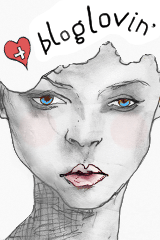Pomanders
Circa: 1500s
Since I was a little girl one of my favorite things to make
during the Christmas season were pomanders. One of my first memories I have is decorating
oranges with cloves in elementary school with one of my closest friends and I have kept up the
tradition ever since. Not only are they a beautiful and natural decoration for your home but the fragrant combination of cloves and citrus smells amazing! This is a wonderful D.I.Y project to for adults and children alike during the holiday season.
All you need are:
- Oranges
- Whole Cloves
- Ground Spice Mixture (Cinnamon, Nutmeg Cloves, Ginger)
- Plastic Bag
- Rubber Band (optional)
- Ribbon (optional)
Directions:
1. Knead the orange gently in your hands to soften the
skin.
2. Poke cloves into the orange in your desired pattern.
You can use a wooden skewer to pierce the skin of the fruit first before inserting
the cloves. Rubber bands can be placed around the orange and serve as guides for your designs.
3. Once you have finished your design place your orange in a plastic bag with a
combination of spices of your choice and gently roll the orange in the bag until it is lightly dusted with the spices.
4. If you would like to hang your pomanders you can add
a ribbon at this time or simply place your pomanders together in a bowl with greenery.
While pomanders have been popular throughout the ages,
their form and purpose have changed significantly over the years. The word pomander originates from the
French pomme d’amber or apple of amber. Pomanders became popular during the Middle
Ages when the Black Death and other ailments ran rampant in Europe. As you can imagine
sanitation during this time was greatly lacking and unfortunately there was
no real concept of germs or how they spread. During that time many attributed their health problems to the stench
lingering about the city and therefore believed that the pleasant scent of a pomander
could repel disease.
Pomanders were worn regularly around the neck in the Middle
Ages by men and women, and was a perfumed ball, containing scented
herbs that were set in waxy substances and could include ambergris, musk, spices, and
rose water. They were typically made from gold or silver and hung from the neck
or belt.
 |
| Queen Elizabeth I rarely went out without her pomander. |
Fast forward a few centuries and the pomander evolved
from a piece of jewelry worn to repeal disease to an orange with cloves dusted in spices and placed
around homes at Christmas. Pomanders enjoyed a revival during the 18th and 19th century with the greater availability of citrus fruits and Victorians expanded the use of pomanders to include household
decorations, natural air fresheners and Christmas ornaments. While the cloves help to preserve the fruit from
spoiling the spices and citrus would add a wonderful fragrance to the home. Pomanders are traditionally hung in bunches from ceiling beams. At times cloves were even
inserted in symbolic shapes and as the fruit dried the pomander became a good luck
charm.
I hope that you will continue this Victorian Christmas tradition and add this fragrant, fun and festive decoration to your own home this year.






















.jpg)

No comments:
Post a Comment